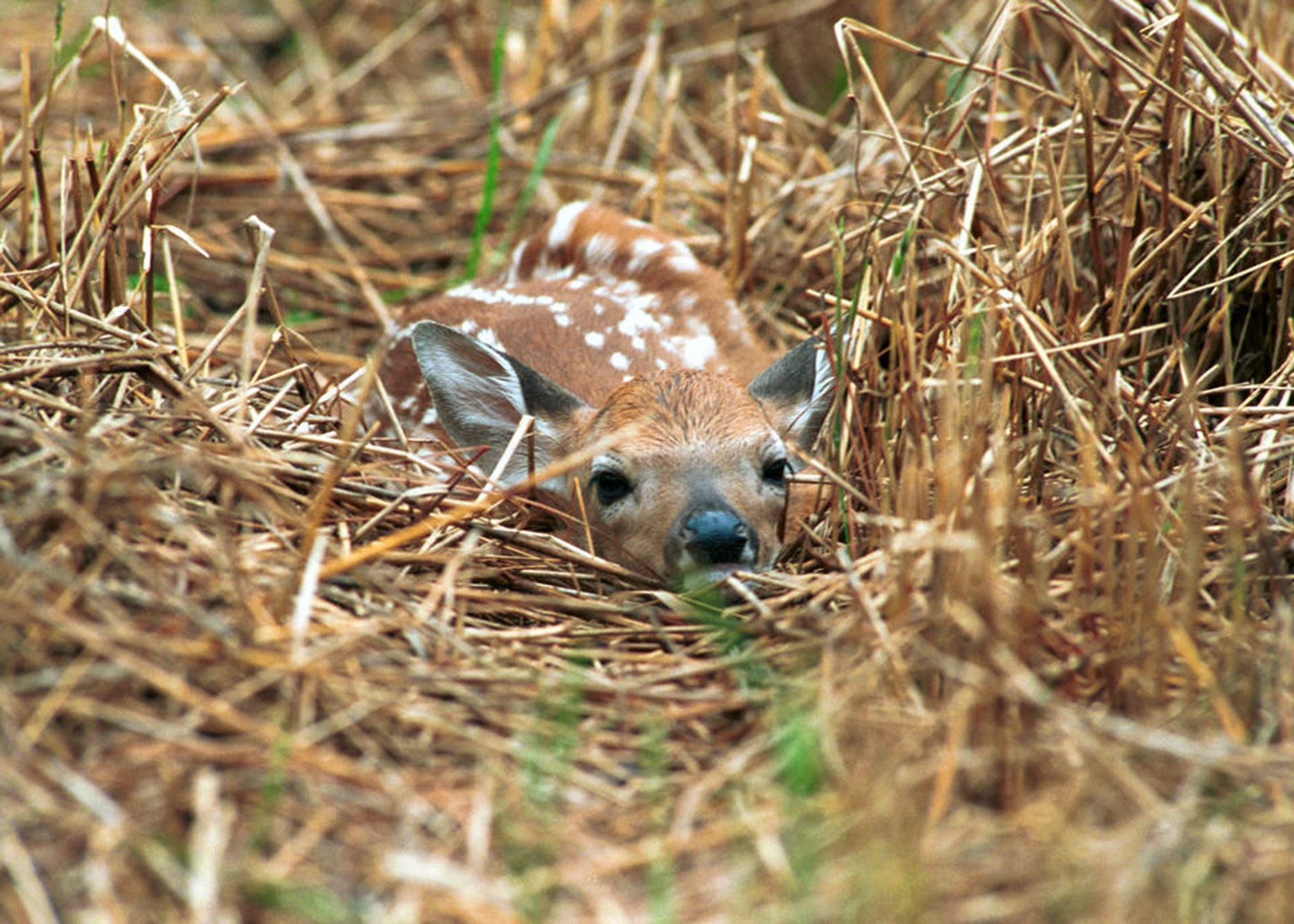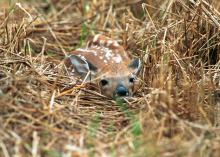Information Possibly Outdated
The information presented on this page was originally released on July 19, 2013. It may not be outdated, but please search our site for more current information. If you plan to quote or reference this information in a publication, please check with the Extension specialist or author before proceeding.
Wild baby animals should be left alone
MISSISSIPPI STATE – Every summer, nature enthusiasts come across baby animals they think are orphans, but most of the time, these young animals have not been abandoned.
Fawn births in Mississippi peak in July and August but many are born from May through October. Wild hogs can have one to three litters per year, depending on circumstances, so it is not unusual for people to encounter young wild animals.
But just because an animal is alone does not mean it is motherless, said Bob Griffin, a wildlife biologist and instructor in Mississippi State University’s College of Forest Resources.
“The nature of the relationship between a doe and a fawn is different from that of most animals, which have constant contact with their young in a nest or a den,” Griffin said. “Does often have twins, and as a survival strategy, the mother will pick a separate place to leave each young fawn bedded down in cover while she goes and feeds. Deer are foragers, and because she’s lactating, she has to take in food to produce milk.”
Griffin, who retired from the Mississippi Department of Wildlife, Fisheries and Parks, said taking a fawn from its hiding place can have serious ramifications.
“Fawns are trained to lay there and not move until something or someone is nearly on top of them,” Griffin said. “People think that if they don’t see the mother around, they should take the fawn home. Not only is this illegal, but it puts the fawn at terrible risk. It will have to be raised in captivity or taken to a rehabilitation center, which reduces its chance for survival.”
Griffin said that if someone takes home a fawn believed to be orphaned then learns it was a mistake, the fawn should be returned to the exact location of its original hiding place within 24 hours to increase the chance of its mother reuniting with it.
“If you think the mother has been killed, hit by a car perhaps, call the Mississippi Department of Wildlife, Fisheries and Parks to alert your local conservation officer,” Griffin said. “They can investigate and determine what to do with the fawn. Don’t put your hands on any wildlife you find. It can be hazardous for you and the animal.”
The urge to rescue a fawn thought to be orphaned may be strong, but Griffin urged animal lovers to think about the bond between a mother and its offspring.
“Would you want to be the one responsible for separating a mother from her fawn?” he asked.
Bill Hamrick, an Extension associate in MSU’s Department of Wildlife, Fisheries and Aquaculture, is a wildlife biologist who specializes in wildlife damage and disease, invasive species and habitat management. He said rescuing wild piglets can have more far-reaching consequences than most people realize.
“Wild pigs have become a serious problem in Mississippi and much of the Southeast. We don’t need to help the pigs,” Hamrick said. “While I realize it can be difficult for some just to walk away from what appears to be an orphaned piglet, that’s exactly what you should do.
“What if the piglet is just a straggler and its mother still close by? Let’s say you capture the piglet, it begins to squeal and an angry sow comes barreling out of the brush at you. You may get seriously hurt,” he said.
The destructive behavior and potential disease threats wild hogs pose to livestock and human health prompted the Mississippi Department of Wildlife, Fisheries & Parks to classify them as a nuisance species.
As a result, it is illegal to capture and release any wild hog at a location different from where the animal was caught. MDWFP has rules governing the capture of wild hogs for slaughter.
“Imagine someone ‘rescues’ a wild piglet, obtains a transport permit and keeps it in a pen on his property,” he said. “Eventually, that little piglet is going to become an adult pig. It’s illegal to allow it to roam freely. It’s also illegal to release it back into the wild.”
Unless the pig is raised for slaughter, the only legal options are to continue feeding it indefinitely in a limited-size enclosure or to euthanize the animal.







